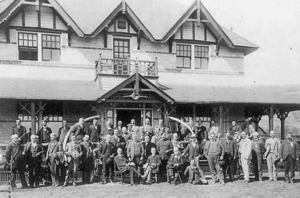External commands (format, label, disk copy, disk comp, tree)- The external commands you mentioned are commands that were commonly used in MS-DOS, a command-line operating system developed by Microsoft. MS-DOS was widely used in the 1980s and early 1990s. These commands were used to perform various tasks related to managing files, disks, and directories. Here’s a brief description of each of these commands:
- FORMAT: The FORMAT command was used to format a disk or a drive, typically a floppy disk or hard drive. Formatting erases all data on the disk and prepares it for storing new data. The syntax for the FORMAT command is typically “FORMAT [drive]:,” where “[drive]:” represents the drive letter of the disk you want to format.
- LABEL: The LABEL command allowed users to assign a name or label to a disk or drive. This label would be displayed when viewing the disk’s contents in the directory listing. The syntax for the LABEL command is “LABEL [drive]: [label],” where “[drive]:” is the drive letter, and “[label]” is the name you want to assign.
- DISKCOPY: The DISKCOPY command was used to create a duplicate copy of a floppy disk. This command was particularly useful for creating backup copies of important disks. The syntax for DISKCOPY is “DISKCOPY [source]: [destination]:,” where “[source]:” is the source drive, and “[destination]:” is the destination drive.
- DISKCOMP: The DISKCOMP command was used to compare the contents of two floppy disks to determine if they were identical or different. This was useful for verifying data integrity. The syntax for DISKCOMP is “DISKCOMP [drive1]: [drive2]:,” where “[drive1]:” and “[drive2]:” are the drives you want to compare.
- TREE: The TREE command was used to display the directory structure of a disk or drive in a tree-like format. It would show all the directories and subdirectories, making it easier to visualize the organization of files and folders. The syntax for the TREE command is typically “TREE [drive]:[path],” where “[drive]:” is the drive letter, and “[path]” is the optional path to a specific directory.
It’s important to note that these commands were specific to MS-DOS and are not typically used in modern operating systems like Windows. Most of these functions, such as formatting and copying disks, have been replaced by more user-friendly graphical interfaces in contemporary operating systems.
What is External commands (format, label, disk copy, disk comp, tree)
External commands like “format,” “label,” “disk copy,” “disk comp,” and “tree” refer to specific commands or utilities that can be run from the command-line interface of an operating system. These commands serve various purposes and are typically used to manage files, directories, and storage devices. The specific functionality of these commands can vary depending on the operating system. Below is a brief explanation of each of these commands:
- FORMAT: The “format” command is used to prepare a storage device, such as a hard drive, USB drive, or floppy disk, for data storage. Formatting erases all existing data on the device and sets up the necessary file system structures. It is commonly used to create a clean storage medium for saving files.
- LABEL: The “label” command allows you to assign a name or label to a storage device, such as a disk or a partition. This label can provide a more meaningful description for the device, making it easier to identify its purpose or contents.
- DISK COPY (DISKCOPY): “Disk copy” is a command that is used to create a duplicate copy of a storage device, such as copying the contents of one floppy disk to another. This can be helpful for backup purposes or for transferring data between storage media.
- DISK COMP (DISKCOMP): “Disk comp” is a command used to compare the contents of two storage devices to determine whether they are identical. It can be used to verify data integrity and ensure that files on two disks are the same.
- TREE: The “tree” command is used to display a hierarchical and tree-like view of the directory structure on a storage device. It shows the structure of folders and subfolders, making it easier to understand the organization of files and directories within a given location.
It’s worth noting that the availability and usage of these commands can vary between different operating systems. The commands you’ve listed, such as “format,” “label,” “disk copy,” “disk comp,” and “tree,” were commonly used in older operating systems like MS-DOS and early versions of Windows. In modern operating systems like Windows 10, Linux, and macOS, the functionality provided by these commands may be replaced or supplemented by other tools and utilities.
Who is Required External commands (format, label, disk copy, disk comp, tree)
The concept of “Required External Commands” depends on the context of the operating system or software you’re using. In modern operating systems like Windows, Linux, and macOS, the specific external commands you’ve mentioned (format, label, disk copy, disk comp, tree) are not typically required for everyday use because they have been replaced by more user-friendly and integrated tools. Here’s a brief overview of how these functions are typically handled in modern operating systems:
- Format: In modern operating systems, you can format storage devices (e.g., hard drives, USB drives) through graphical user interfaces (GUIs). You can format drives using the built-in disk management tools, file explorer, or disk utility applications, depending on the OS.
- Label: In modern systems, you can label storage devices (e.g., renaming drives) using the file explorer or disk management tools. This is done through a user-friendly interface.
- Disk Copy: Modern operating systems provide built-in utilities or third-party software for creating disk or drive copies. For example, in Windows, you can use “Disk Clone” functionality in tools like EaseUS or Clonezilla.
- Disk Comp: The concept of comparing disks or drives for differences is less common in modern operating systems. Instead, users often rely on file comparison tools to check the contents of files or folders.
- Tree: While the “tree” command is not a standard command in modern operating systems, you can achieve similar functionality by using commands like “dir” in Windows or “ls” in Linux with specific parameters to list directory structures.
These commands, as you’ve described them, were more prevalent and necessary in older operating systems like MS-DOS. Their functionality has evolved and become more user-friendly in contemporary operating systems, so users generally do not need to use these specific external commands directly.
When is Required External commands (format, label, disk copy, disk comp, tree)

External commands like “format,” “label,” “disk copy,” “disk comp,” and “tree” were more commonly used in earlier operating systems, such as MS-DOS and some versions of Windows that lacked the advanced graphical user interfaces (GUIs) that modern operating systems have. Here are some scenarios where these commands might have been required or more commonly used:
- MS-DOS Era: During the era when MS-DOS was the primary operating system for personal computers, these commands were essential for performing various tasks, as MS-DOS operated primarily through the command line.
- Floppy Disk Management: Tasks like formatting and copying floppy disks were routine, as floppy disks were a primary means of data storage and transfer.
- Early Windows Versions: In the early versions of Windows (Windows 3.1 and Windows 95, for example), some of these commands were used for disk management and file organization, as the operating system still relied heavily on the MS-DOS command prompt.
- File and Disk Maintenance: The “tree” command, for example, could be used to visualize and manage directory structures, which was more important in a text-based environment.
- Data Integrity Checks: “Disk comp” was used to ensure that two disks were identical, which was important for data integrity and reliability in a time when data storage was less robust.
In modern operating systems, these commands are rarely needed for day-to-day tasks, as GUI-based tools and utilities have replaced them. However, in specialized scenarios or for historical purposes, these commands might still be used. For instance, computer historians or retro computing enthusiasts may use them to interact with older systems.
Where is Required External commands (format, label, disk copy, disk comp, tree)
The specific external commands you mentioned (format, label, disk copy, disk comp, tree) were primarily used in earlier operating systems like MS-DOS and older versions of Windows. The availability and usage of these commands in modern operating systems can vary, but in general, they are less commonly used and often replaced by more user-friendly, GUI-based tools. Here’s where you might find these commands:
- MS-DOS: These commands were fundamental in MS-DOS, and you could use them in the MS-DOS command prompt. MS-DOS is a text-based operating system, and these commands were used for various file and disk management tasks.
- Older Versions of Windows: In some early versions of Windows (e.g., Windows 9x), you could access these commands through the command prompt. These operating systems were built on top of MS-DOS, so they retained compatibility with these commands.
- Command Prompt in Modern Windows: While these commands are not commonly used in modern versions of Windows (e.g., Windows 10 and Windows 11), you can still access them through the Command Prompt. To do so, open the Command Prompt and type the command along with the required parameters. However, these commands may not be as efficient or necessary for most tasks as they were in the past.
- Third-Party Software: For certain tasks like disk copying or disk comparison, third-party software has become more prevalent and user-friendly. Users may prefer to use dedicated applications or utilities designed for these purposes.
- Modern Operating Systems (Linux, macOS): These commands are not standard in modern operating systems like Linux or macOS. These operating systems have their own set of commands and utilities for file and disk management, typically accessed through the terminal or command line.
In summary, while these commands may still be available in some modern systems, they are generally less frequently used and have been replaced by more user-friendly and efficient tools. Most users today perform file and disk management tasks through graphical user interfaces or with the help of modern command-line utilities.
How is Required External commands (format, label, disk copy, disk comp, tree)
The specific external commands you mentioned (format, label, disk copy, disk comp, tree) were used in older operating systems like MS-DOS and some early versions of Windows. Here’s a brief explanation of how these commands were used and their typical syntax in an MS-DOS environment:
- FORMAT:
- Purpose: Used to format a storage device (e.g., floppy disk, hard drive) to prepare it for data storage. Formatting erases all existing data on the device.
- Syntax:
FORMAT [drive]:where “[drive]:” represents the drive letter of the device you want to format. For example,FORMAT C:would format the C drive.
- LABEL:
- Purpose: Used to assign a name or label to a storage device (e.g., a disk or partition) for easier identification.
- Syntax:
LABEL [drive]: [label]where “[drive]:” is the drive letter and “[label]” is the name you want to assign. For example,LABEL C: MyDrivewould assign the label “MyDrive” to the C drive.
- DISK COPY (DISKCOPY):
- Purpose: Used to create a duplicate copy of a floppy disk or similar storage medium.
- Syntax:
DISKCOPY [source]: [destination]:where “[source]:” is the source drive and “[destination]:” is the destination drive. For example,DISKCOPY A: B:would copy the contents of the A drive to the B drive.
- DISK COMP (DISKCOMP):
- Purpose: Used to compare the contents of two floppy disks to determine if they are identical.
- Syntax:
DISKCOMP [drive1]: [drive2]:where “[drive1]:” and “[drive2]:” are the drives you want to compare. For example,DISKCOMP A: B:would compare the contents of drives A and B.
- TREE:
- Purpose: Used to display the directory structure of a storage device in a tree-like format.
- Syntax:
TREE [drive]:[path]where “[drive]:” is the drive letter, and “[path]” is the optional path to a specific directory. For example,TREE C:\would display the directory structure of the C drive.
These commands are specific to MS-DOS and early Windows versions. As mentioned previously, they are less commonly used in modern operating systems, as graphical interfaces and more advanced utilities have largely replaced their functionality.
Case Study on External commands (format, label, disk copy, disk comp, tree)
The business is in the process of upgrading its computer systems to modern operating systems. This case study illustrates how these commands were used and how the transition to newer technologies occurred.
Case Study: Transition from MS-DOS to Modern Operating Systems
Background: The XYZ Company, a small manufacturing business, has been using MS-DOS-based computers for its operations for many years. They have relied on these systems for managing their inventory, sales records, and other critical data. However, due to the limitations of the outdated technology, the company decides to upgrade to modern operating systems and hardware.
Challenges:
- Data Migration: The company’s business-critical data, which is stored on floppy disks and older hard drives, needs to be migrated to the new systems.
- Legacy Software: The company has custom software applications running on MS-DOS, and they need to find alternatives or have them updated to work on modern operating systems.
- File and Disk Management: The company is used to performing tasks like formatting disks, labeling storage devices, and managing directories using external MS-DOS commands. They need to adapt to the modern file management methods.
Solutions:
- Data Migration:
- The company hires a professional IT consultant to assist with data migration. The consultant uses modern tools and hardware to transfer data from floppy disks and older hard drives to the new systems.
- The “DISKCOPY” command is used to create backup copies of important data from floppy disks. These copies are then transferred to the new systems.
- Legacy Software:
- The company collaborates with a software development firm to update or recreate their custom applications for the new operating system. Alternatively, they may consider using virtualization solutions to run legacy software within a modern OS.
- File and Disk Management:
- The company’s staff is trained to use the modern graphical user interfaces and file management tools in the new operating system.
- To mimic the functionality of the “TREE” command, they are introduced to the file explorer or command-line tools in the modern operating system, which provide similar directory visualization capabilities.
Results:
- The company successfully migrates its data and adopts modern technology, allowing for greater efficiency and reliability in their operations.
- The transition to modern operating systems also improves the user-friendliness of their systems, making it easier for employees to manage files, disks, and directories using GUI-based tools.
- While some external MS-DOS commands like “DISKCOPY” and “TREE” were useful during the transition, the company no longer relies on them for day-to-day operations.
This case study highlights the challenges faced by a business that was heavily reliant on external MS-DOS commands and its successful transition to modern operating systems with the help of professional IT support and the adaptation of new technologies and methodologies.
White paper on External commands (format, label, disk copy, disk comp, tree)
Introduction
External commands are fundamental components of command-line interfaces in legacy operating systems. They provide users with tools to manage storage devices, perform file and disk operations, and visualize directory structures. This white paper explores five key external commands: “format,” “label,” “disk copy,” “disk comp,” and “tree.”
Legacy operating systems, particularly MS-DOS and early versions of Windows, heavily relied on these commands for various administrative and data management tasks. Understanding their functionality is essential for historical reference and for enthusiasts interested in the evolution of computing technology.
Table of Contents
- External Commands in Legacy Operating Systems
- Historical context
- Transition to graphical user interfaces
- Relevance in modern computing
- FORMAT Command
- Purpose and Usage
- Syntax and Parameters
- Use Cases
- Modern alternatives
- LABEL Command
- Purpose and Usage
- Syntax and Parameters
- Significance in legacy systems
- Modern approaches to device labeling
- DISK COPY Command
- Purpose and Usage
- Syntax and Parameters
- Data backup and disk cloning
- Modern backup and disk cloning solutions
- DISK COMP Command
- Purpose and Usage
- Syntax and Parameters
- Data verification and integrity
- Modern data comparison tools
- TREE Command
- Purpose and Usage
- Syntax and Parameters
- Visualizing directory structures
- Modern directory visualization methods
- Conclusion
- The legacy and continued relevance of external commands
- Navigating the transition to modern computing
- References
- Citing historical sources and documentation
Executive Summary
External commands, including “format,” “label,” “disk copy,” “disk comp,” and “tree,” played pivotal roles in the operation of legacy operating systems, most notably MS-DOS and early versions of Windows. These commands enabled users to format storage devices, assign labels to them, clone disks, compare data for integrity, and visualize directory structures.
While these commands were essential during the era of command-line computing, the transition to modern operating systems with graphical user interfaces has rendered them largely obsolete. Modern computing offers user-friendly alternatives for storage device management and file manipulation.
This white paper provides insights into the historical context and the functionalities of these external commands, outlines their syntax and usage, and explores their relevance in contemporary computing environments. It also highlights modern alternatives and tools that have replaced these commands.
Understanding the evolution of external commands is not only valuable for computer historians but also for those involved in IT and technology who may encounter these legacy systems or wish to appreciate the historical foundations of modern computing.
This outline serves as a starting point for creating a comprehensive white paper on external commands in legacy operating systems. Each section can be further developed with detailed information, examples, and historical context.





